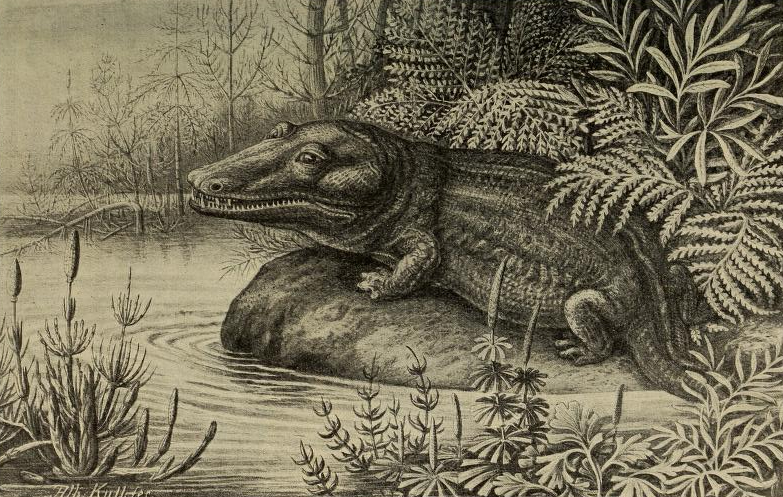When we think of prehistoric life, images of towering dinosaurs and massive marine reptiles often dominate our imagination. However, the Triassic period—spanning from 252 to 201 million years ago—was home to a remarkable diversity of miniature creatures that rarely make headlines in paleontological discussions. These diminutive species played crucial roles in evolving ecosystems following the devastating Permian-Triassic extinction event, which had wiped out approximately 95% of marine species and 70% of terrestrial vertebrates. The recovery of life during this “Dawn Age” featured fascinating tiny pioneers that helped establish the foundation for the age of dinosaurs that would follow. Let’s explore these overlooked miniatures that thrived in the shadow of their larger contemporaries.
The Triassic Setting: A World in Recovery
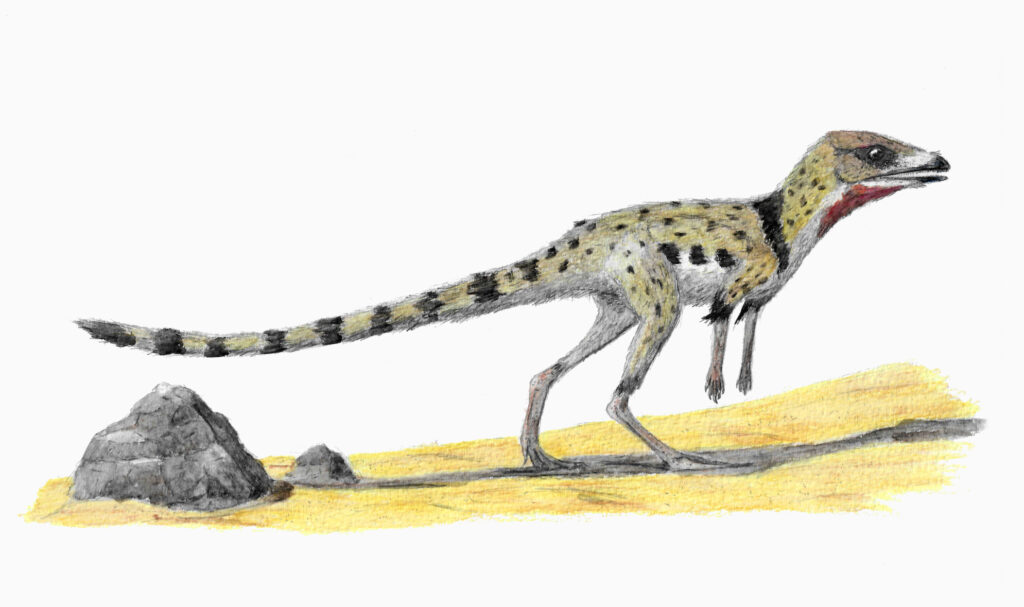
The Triassic period represented Earth’s recovery phase following the most devastating mass extinction in our planet’s history. The landscape consisted of the supercontinent Pangaea, surrounded by a vast world ocean called Panthalassa, creating extensive coastlines and shallow seas. Climate patterns were extreme, with intense seasonal shifts and widespread arid conditions dominating much of the inland areas. These challenging conditions proved advantageous for small-bodied animals that could better manage their thermal regulation and survive with fewer resources. Small species could find refuge in microhabitats—beneath rocks, in soil, or among vegetation—that larger animals couldn’t access, allowing them to flourish in ecological niches unavailable to their larger contemporaries. This period of recovery set the stage for an extraordinary radiation of miniature species across terrestrial and aquatic environments.
Scleromochlus: The Tiny Proto-Pterosaur
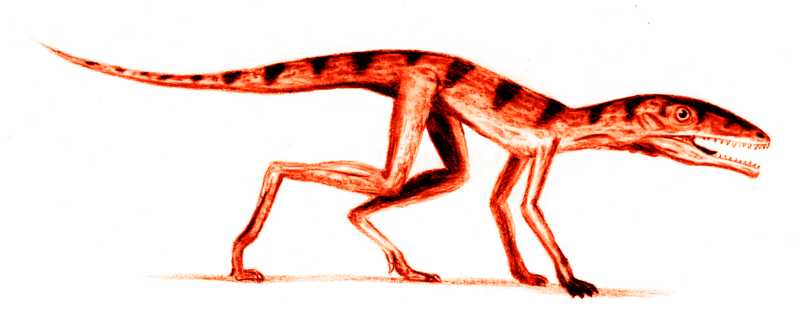
Discovered in the Lossiemouth Sandstone of Scotland, Scleromochlus taylori represents one of the most fascinating miniatures of the late Triassic. This cat-sized reptile measured a mere 20 centimeters in length but holds tremendous importance in understanding reptile evolution. Recent studies suggest it belongs to the pterosauromorpha, making it a close relative to the ancestors of flying pterosaurs. Scleromochlus possessed remarkably long hindlimbs and a lightweight frame that indicates it was likely a nimble hopper, perhaps similar to modern jerboas or kangaroo rats. Its slender build and gracile limbs show how miniaturization was already driving specialization in locomotion and ecology. Despite its small size, this little creature represents a crucial transition in archosaur evolution, demonstrating how small body size may have been advantageous for the ancestors of flying reptiles.
Megachirella: The Oldest Known Lizard Ancestor

Megachirella wachtleri, discovered in the Italian Alps, represents the oldest known ancestor of all squamates—the group containing modern lizards and snakes. This tiny reptile, measuring only 6 centimeters in length, lived approximately 240 million years ago during the Middle Triassic. Advanced CT scanning revealed anatomical features that firmly place Megachirella at the base of the squamate family tree, pushing back the origin of lizards by 75 million years. Despite its small size, Megachirella possessed key anatomical features, including a unique jaw structure and specific skull characteristics that would later define modern lizards. This palm-sized creature likely scurried through the undergrowth of Triassic forests, feeding on insects and other invertebrates. The discovery of Megachirella demonstrates how miniature species often represent crucial evolutionary transitions, with small body size potentially facilitating rapid adaptation and evolutionary innovation.
Tiny Tritylodontids: The Mammal-Like Miniatures

Tritylodontids represent some of the most mammal-like cynodonts of the late Triassic and early Jurassic periods, with several species exhibiting remarkably small body sizes. These creatures, like Oligokyphus and Tritylodon, typically ranged from rat to rabbit-sized, with some species weighing less than 500 grams. Despite their diminutive stature, tritylodontids featured complex dentition specialized for herbivory, with multi-cusped postcanine teeth perfect for processing tough plant material. Their skeletons show several mammalian characteristics, including an expanded secondary palate, a nearly mammalian jaw joint, and limbs positioned more directly beneath the body rather than splayed outward. These small mammal-like reptiles persisted for over 30 million years, far outlasting many of their contemporaries. Their success as miniature herbivores demonstrates how small-bodied animals could exploit plant resources through specialized dentition rather than the large gut systems seen in bigger herbivores.
Microconodon: The Mouse-Sized Proto-Mammal

Microconodon tenuirostris represents one of the tiniest proto-mammals of the Late Triassic period, with a skull measuring barely 2 centimeters in length. This mouse-sized cynodont lived approximately 220 million years ago in what is now the eastern United States. Unlike its larger relatives, Microconodon shows significant adaptations for insectivory, with sharp, needle-like teeth perfect for puncturing the exoskeletons of insects and other small invertebrates. Its small size would have allowed it to maintain a high metabolic rate, possibly approaching the endothermic condition seen in true mammals. Microconodon likely occupied a nocturnal niche, using its acute hearing and sense of smell to hunt prey in low-light conditions. This tiny cynodont represents an important transitional form in the evolution of mammals, demonstrating how miniaturization may have driven the development of mammalian characteristics such as improved sensory capabilities and possibly even fur for insulation.
Tiny Temnospondyls: Miniature Amphibians
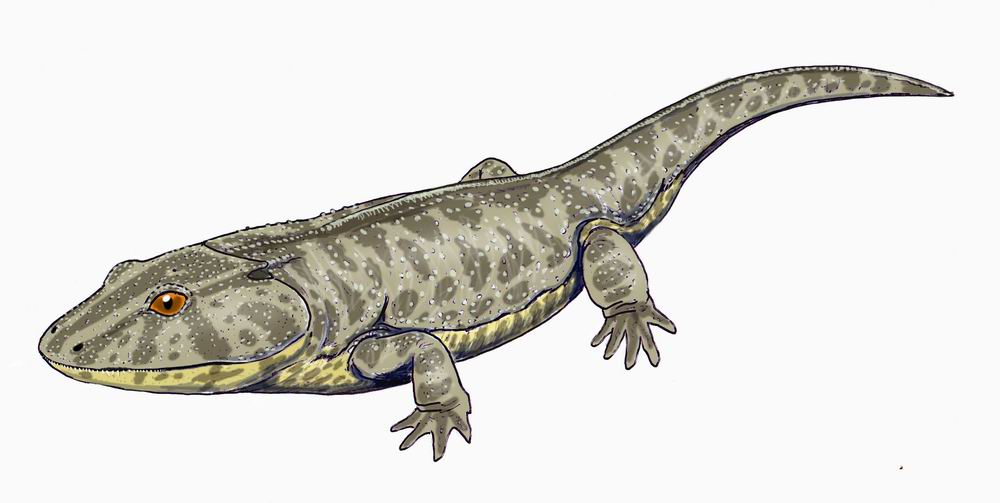
The Triassic period witnessed a radiation of miniature temnospondyl amphibians that rarely exceeded 30 centimeters in length. Species like Micropholis and Lydekkerina represent some of these diminutive forms that evolved from much larger ancestors. These mini-amphibians typically possessed proportionally larger heads and shorter tails than their bigger relatives, with some species showing paedomorphic traits (retention of juvenile characteristics into adulthood). Their small size allowed them to exploit microhabitats in freshwater environments, including small streams and ephemeral pools that larger amphibians couldn’t access. Some species show evidence of specialized feeding mechanisms, with fine, densely packed teeth suitable for filter feeding or capturing minute aquatic prey. The success of these small temnospondyls demonstrates the evolutionary advantage of reduced body size during the recovery phase following the Permian-Triassic extinction, allowing for exploitation of resources unavailable to larger competitors.
Proganochelys: The Miniature Proto-Turtle
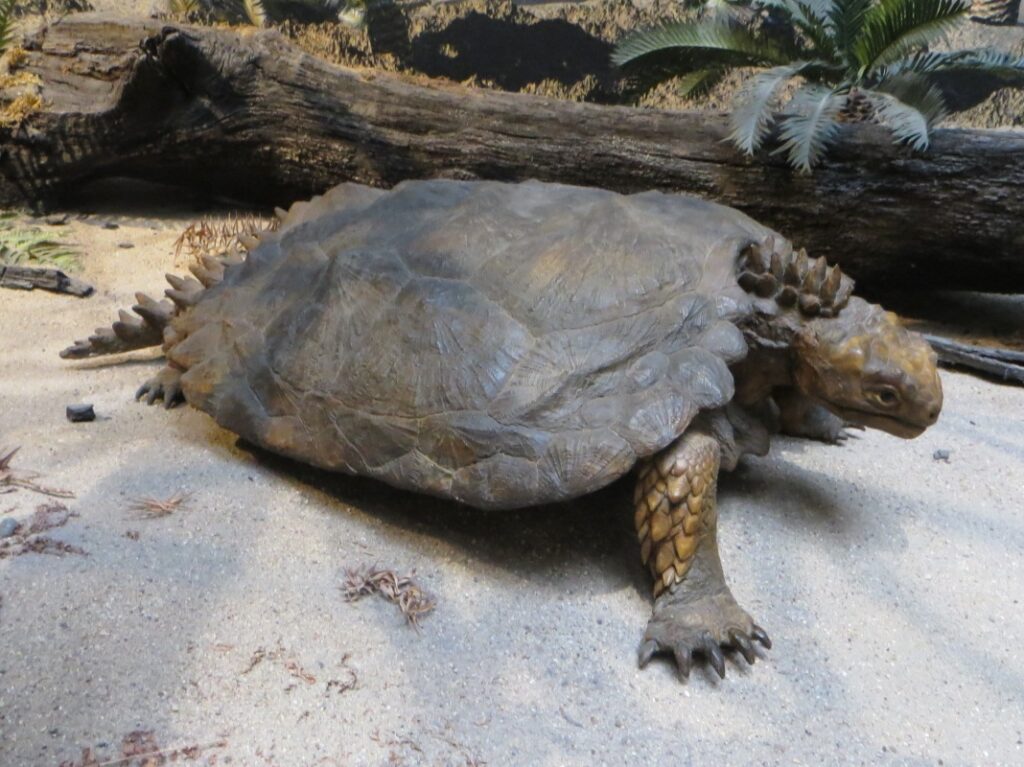
While not microscopic by modern standards, the earliest turtles like Proganochelys were considerably smaller than many of their contemporaries, typically measuring around 60 centimeters in length. This relatively modest size represented a departure from the larger reptilian forms common in the Triassic. Proganochelys possessed a fully formed shell, demonstrating that this key turtle adaptation appeared early in their evolutionary history and initially evolved at a relatively small body size. Unlike modern turtles, Proganochelys couldn’t retract its head and possessed teeth along with a spiky tail club for defense. Its small size would have allowed it to occupy protective microhabitats while still being able to forage effectively for plant material and invertebrates. The success of these early, modestly-sized turtles demonstrates how novel body plans could evolve at smaller scales before later lineages expanded to larger sizes in subsequent periods.
Eocaecilia: The First Miniature Caecilian

Eocaecilia micropodia, discovered in Arizona’s Early Jurassic deposits but likely originating in the Late Triassic, represents the oldest known member of the caecilian lineage—limbless, burrowing amphibians that continue to exist today. This primitive caecilian measured only about 15 centimeters in length, making it one of the smallest tetrapods of its time. Unlike modern caecilians, Eocaecilia still possessed tiny vestigial limbs, demonstrating its transitional nature as it adapted to a fossorial (burrowing) lifestyle. Its elongated body and reinforced skull were adaptations for pushing through soil and leaf litter. Eocaecilia likely fed on small invertebrates in the soil, using its specialized jaw mechanism to capture prey in confined underground spaces. This tiny amphibian demonstrates how miniaturization often accompanies major evolutionary transitions, particularly when species adapt to specialized niches like subterranean habitats.
Lilliput Effect in Triassic Marine Life
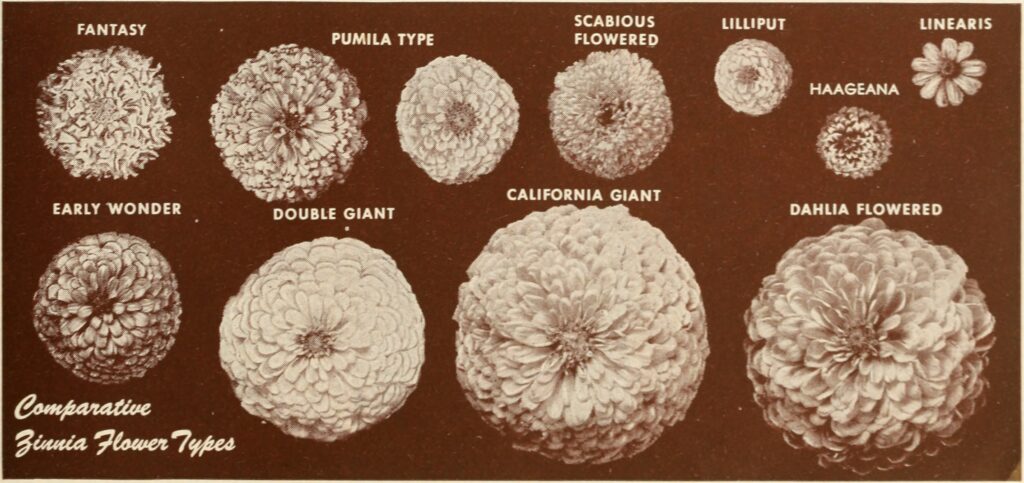
The early Triassic oceans exhibited what paleontologists call the “Lilliput Effect”—a phenomenon where surviving species or their descendants become noticeably smaller following mass extinction events. Marine invertebrates, including brachiopods, bivalves, gastropods, and ammonoids, all show evidence of this dramatic size reduction, with some lineages producing miniature forms barely a centimeter in diameter. Size reduction has been attributed to several factors, including low oxygen conditions, limited food resources, and increased ocean temperatures following the Permian extinction. Smaller body size allowed marine creatures to complete their life cycles more quickly and survive with fewer resources in stressed environments. Some miniature ammonoids developed complex shell structures despite their small size, demonstrating morphological innovation at reduced scales. The prevalence of these tiny marine creatures during the early recovery phase illustrates how miniaturization can serve as an evolutionary strategy during times of environmental stress.
Drepanosaurus: The Tiny Hook-Clawed Oddity
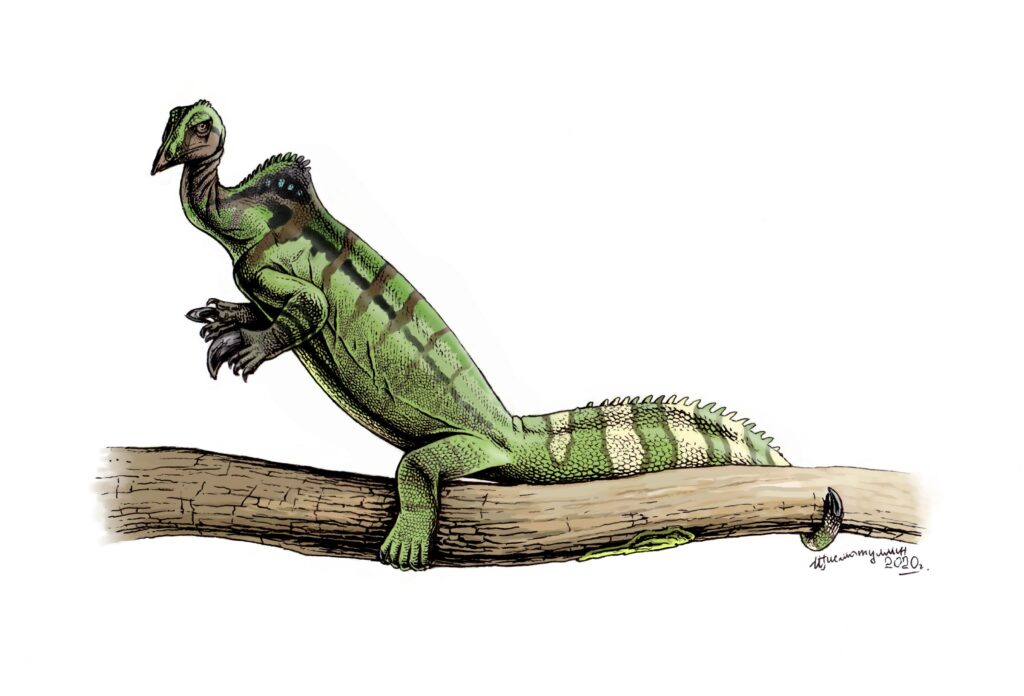
Drepanosaurus unguicaudatus represents one of the strangest reptiles of the Late Triassic, combining small body size with highly specialized anatomy. This chameleon-sized creature measured approximately 20 centimeters in length and possessed some of the most unusual forelimbs known in any tetrapod. Its most distinctive feature was a massive claw on a specialized second finger, coupled with a bizarre humpbacked appearance and prehensile tail ending in a claw-like tip. These adaptations suggest Drepanosaurus was a specialized climber and possibly a bark-ripper, using its powerful claws to extract insects from trees in a manner vaguely reminiscent of modern anteaters. Its small size would have allowed it to move efficiently along branches and access food sources unavailable to larger reptiles. Drepanosaurus demonstrates how miniaturization can accompany extreme specialization, allowing small-bodied animals to exploit highly specific ecological niches.
Kuehneotheriids: The Shrew-Sized Almost-Mammals
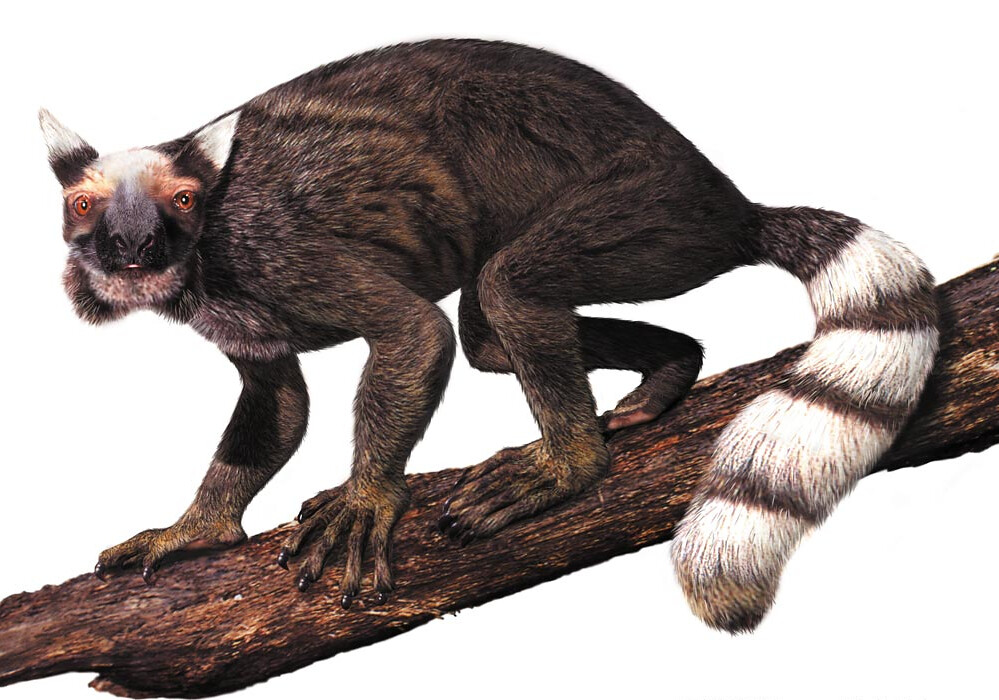
Kuehneotheriids represent some of the most mammal-like creatures of the Late Triassic, with body sizes comparable to modern shrews. These tiny animals, including the genus Kuehneotherium, typically weighed only 10-20 grams and measured just a few centimeters in length. Despite their miniature size, kuehneotheriids possessed remarkably complex teeth with a triangular arrangement of cusps that allowed for precise occlusion (tooth-to-tooth contact) when chewing—a key mammalian adaptation. Their dental characteristics suggest they were primarily insectivorous, specializing in capturing and processing small arthropods. Skeletal evidence indicates these tiny creatures were likely agile and possibly capable of some climbing behavior. The diminutive size of kuehneotheriids may have allowed them to regulate their body temperature more effectively, potentially representing early steps toward true endothermy (warm-bloodedness) that would become characteristic of mammals.
Microsaurs: Tiny Specialists of the Early Triassic
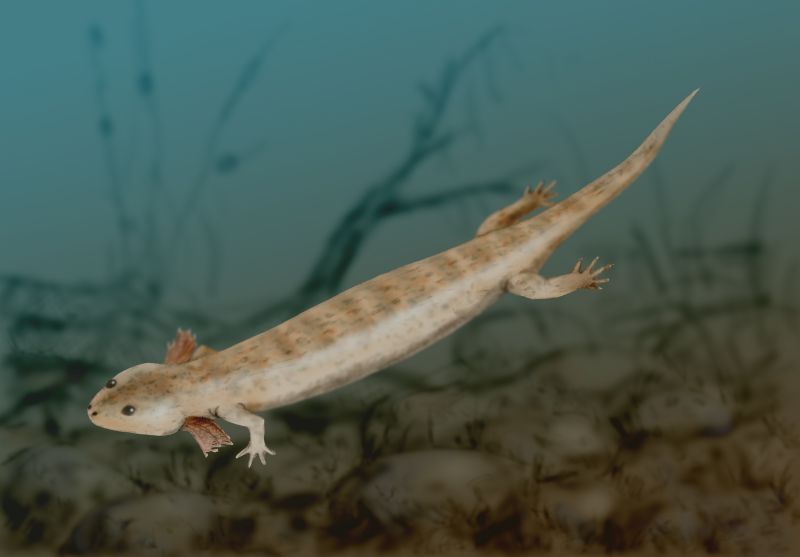
Microsaurs were a diverse group of small, salamander-like lepospondyl amphibians that persisted into the Early Triassic after surviving the Permian-Triassic extinction event. These animals typically measured less than 15 centimeters in length, with some species barely exceeding 5 centimeters. Despite their small size, microsaurs displayed remarkable ecological diversity, with some species adapted for aquatic environments, others for terrestrial habitats, and some specialized for burrowing. Their miniature bodies featured various specializations, including elongated trunks, reduced limbs in burrowing forms, and reinforced skulls for pushing through substrate. Some species possessed unique dentition, suggesting specialized diets ranging from insectivory to possibly herbivory or omnivory. The persistence and diversity of these tiny tetrapods in the Early Triassic demonstrate how small body size could be advantageous during recovery phases following mass extinctions, allowing for rapid adaptation to available ecological niches.
Evolutionary Significance of Triassic Miniatures

The prevalence of miniature body forms during the Triassic period holds profound implications for understanding evolutionary processes. Small body size often facilitates rapid adaptation due to shorter generation times and reduced resource requirements, allowing miniature species to evolve quickly in response to new ecological opportunities. Many major evolutionary transitions appear to have occurred first at small body sizes before giving rise to larger descendants—a pattern seen in early pterosauromorphs, proto-mammals, and stem turtles of the Triassic. Miniaturization frequently drives morphological innovation by imposing different physical constraints on organisms, forcing novel solutions to biological challenges. The dominance of small-bodied animals during the recovery phase following the Permian extinction suggests that miniaturization may be an important survival strategy during times of environmental stress. These Triassic miniatures represent not just curiosities but critical evolutionary experiments that established new body plans and ecological strategies that would shape vertebrate evolution for millions of years to come.
How Miniature Species Helped Rebuild Life After Extinction
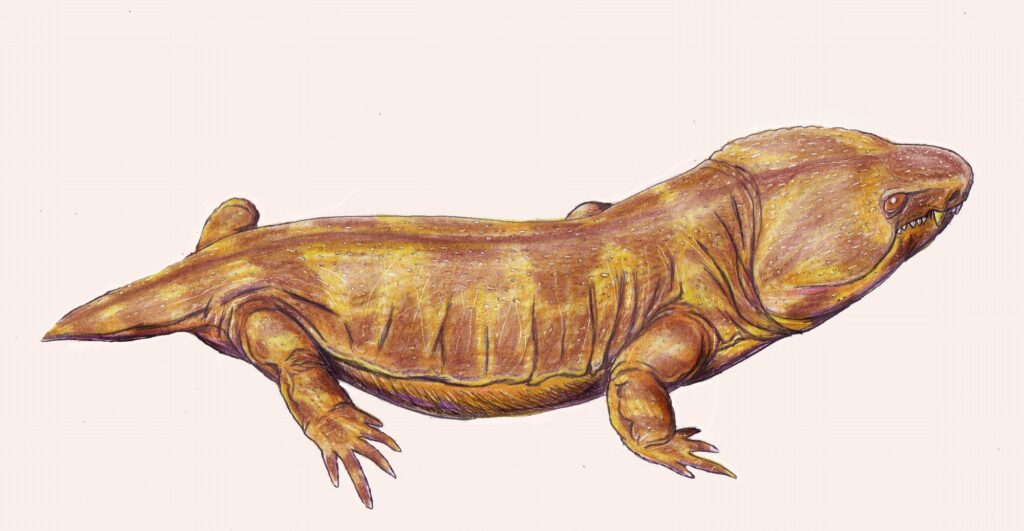
The tiny inhabitants of the Triassic world may lack the dramatic appeal of the giant dinosaurs that would follow them, but their evolutionary significance cannot be overstated. These miniature pioneers—from proto-mammals smaller than mice to hook-clawed reptiles the size of chameleons—established new ecological niches and evolutionary pathways during Earth’s recovery from its most devastating extinction event. Their success demonstrates that being small doesn’t mean being insignificant; rather, these diminutive creatures often stood at the forefront of evolutionary innovation. By exploring these overlooked miniatures of the Dawn Age, we gain a more complete understanding of how life rebounds from catastrophe and how key adaptations often emerge first at small scales before reshaping the history of life on Earth. The next time you imagine the prehistoric world, remember that alongside the giants walked countless tiny marvels, quietly writing their chapters in the story of evolution.

